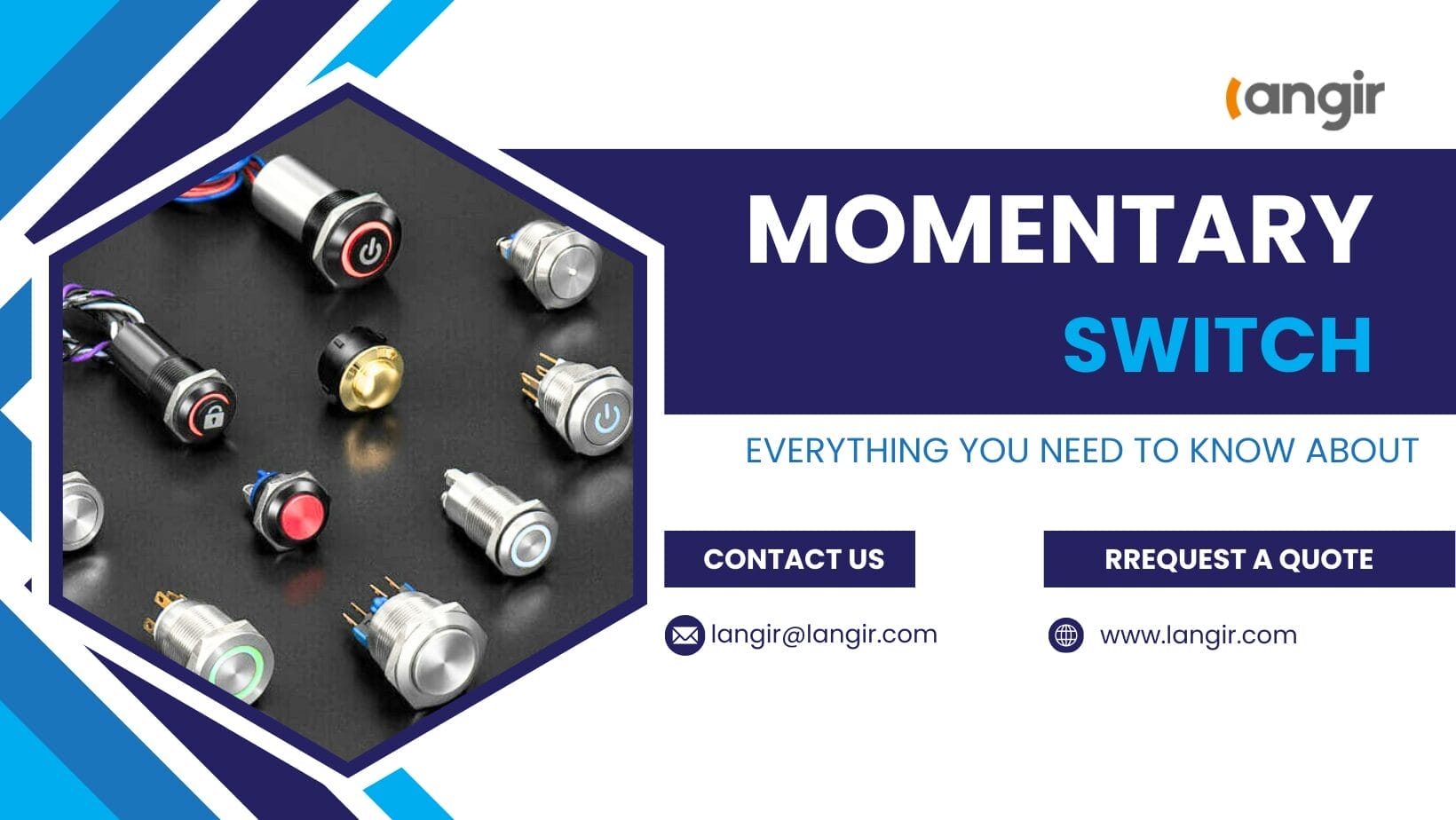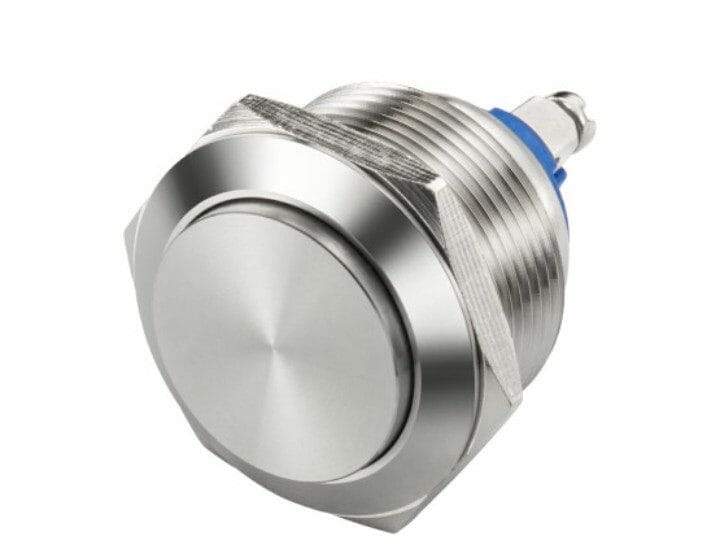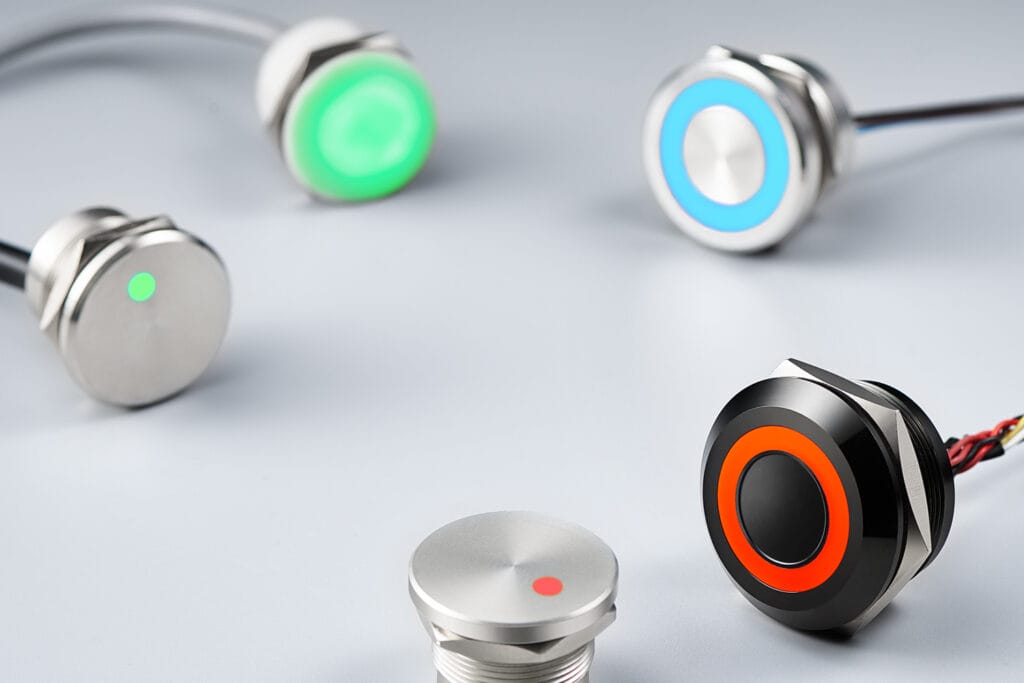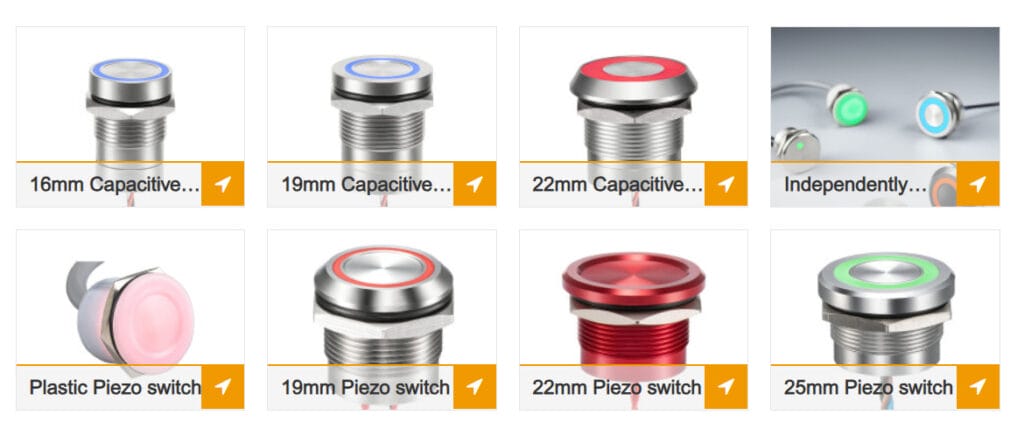
Electrical Switches are integral components in electronics, serving as the gatekeepers of current flow. An array of switches is available, but the momentary switch stands out as a versatile option. These switches find applications in various devices, from everyday consumer electronics to industrial machinery and automotive systems.
You must learn everything about momentary push button switches to operate these devices and electronics efficiently and make the most out of them. In this guide, we will tell you about what is a momentary switch, its applications, advantages, and more. Continue reading to know more!
What is a Momentary Switch?
A momentary switch, also known as a “momentary contact switch,” works or turns “on” only for a brief period when it is actuated. It automatically returns to its default “off” position when the actuation is released. Unlike a typical latching switch that remains in its current state until manually changed, a momentary switch is spring-loaded to return to its original position once pressure or force is removed.
The primary distinguishing feature of a momentary push button switch is its transient nature. It’s useful for performing specific actions or functions only momentarily. These include initiating a short burst of electrical activity or triggering a response in an electronic system. This characteristic makes momentary switches particularly useful for tasks requiring precise timing and control. They are used in intercoms, lighting products, doorbells, etc. Now let’s have a look at the working of the momentary switch!
How Does a Momentary Switch Work?
Momentary push button switches operate on a simple principle of temporarily completing or interrupting an electrical circuit. Consisting of two main components: the actuator and the contacts, this switch works by the spring mechanism. When the actuator, typically a button or a lever, is pressed, it physically moves the contacts together, allowing electric current to flow through the switch and complete the circuit.
The circuit stays closed as long as the actuator remains pressed, enabling the desired function or action. Once the pressure on the actuator is released, the built-in spring mechanism pushes the contacts back to their original positions. It breaks the electrical connection and opens the circuit.
Types of Momentary Push Button Switch
Generally, a momentary push button switch comes in various types depending on its shape, style, structure, etc. These include:
Waterproof Momentary Push Button Switch
First, we have the waterproof momentary push button switch. With an impervious constitution, this switch takes on challenges posed by moisture and liquids. Meticulously sealed against water infiltration, it boasts reliability even in damp environments.
This attribute lends it a role in marine electronics, automotive controls, and outdoor apparatuses. Its ability to function despite exposure to water is of paramount importance.
Tactile Momentary Push Button Switch
These switches provide tactile feedback with a distinct click or snap when active. As the button is pressed, a palpable click or snap sensation confirms the successful initiation of the switch.
This tactility prevents accidental activations and establishes a tangible connection between the user and the device. Used in keyboards, remote controls, and gaming peripherals, this switch type transforms your simple device interactions into engaged experiences.
Illuminated or LED Momentary Push Button Switch
Similar to a standard push button, this switch includes built-in illumination, often in the form of a Light Emitting Diode (LED) indicator. The illumination provides visual feedback on the switch’s active state.
This illuminating effect is particularly advantageous in settings where ambient lighting is limited or when instant recognition of operational states is imperative. Whether integrated into audio equipment setups or control panels, this switch delivers both practicality and aesthetic charm.
Soft Touch Momentary Push Button Switch
The Soft Touch Momentary Push Button Switch is a modern take on button interaction. Unlike traditional switches that require a physical press, this one responds to a gentle touch, similar to how your smartphone screen works.
It brings a sleek and sophisticated feel to touch-sensitive interfaces, smartphones, and home automation systems. The moment you touch it, it reacts without needing a hard press, offering an effortless way to engage with the device.
Advantages of Momentary Switch
Now we are going to look at some exciting benefits of momentary push button switch:
1. Versatile
The compact form factor of a momentary push button switch makes it highly versatile. These switches seamlessly integrate into devices of varying sizes, from handheld gadgets to elaborate control panels. This adaptability ensures that momentary push buttons find relevance across a diverse spectrum of applications.
These vary from consumer electronics to industrial machinery. Their unobtrusive design doesn’t compromise usability, allowing them to be effortlessly incorporated into different contexts.
2. Space Saving Design
Momentary switches stand out for their exceptional space efficiency, making them an ideal choice for compact designs and constrained environments. These switches provide momentary contact, meaning they only occupy space while they are being pressed and the connection is active.
This inherent design minimizes the physical footprint of the switch itself. As a result, momentary push button switches are suitable for applications where optimizing space is crucial. These include control panels, handheld devices, and equipment with limited real estate.
3. Cost-Effective
Momentary push buttons are budget-friendly as their straightforward design lends itself to efficient manufacturing processes, resulting in cost-effective production. These switches are often available at a lower price than more complex switch types. This makes them an economical choice for various applications without sacrificing performance.
4. Theft Prevention
Integrating momentary push buttons directly into devices or control panels establishes a level of security that deters theft. Unlike standalone components, these buttons are not easily removed without impacting the functionality of the entire system.
This feature is particularly advantageous in scenarios where the switch is situated in public areas or environments where unauthorized access is a concern. The secure installation of these buttons contributes to the overall robustness of the system.
5. Resilient Against High Voltage
Momentary push buttons exhibit a commendable degree of resilience when it comes to voltage and short circuits. Their robust construction is geared toward withstanding the electrical demands of various applications.
However, it’s important to note that their compact size can make them more susceptible to damage in extreme voltage spikes or adverse conditions. As with any component, proper usage and consideration of operating parameters are crucial to ensure reliable performance over time.
Applications of Momentary Push Button Switch
Here’s an explanation of the applications of momentary switches in various contexts:
1. Intercoms
Momentary push button switches are essential components in intercom systems, enabling you to establish temporary communication connections. Pressing the button activates the intercom, allowing you to communicate with others in different locations. This functionality is crucial for securing entrances, communication between rooms, and making building-wide announcements.
2. Home Appliances
Many household appliances incorporate momentary push button switches to facilitate specific operations. For instance, you can use these switches in a microwave oven or a washer to start or pause a process quickly. This user-friendly design enhances your experience and convenience when using these appliances.
3. Elevator Buttons
Elevator buttons, often equipped with momentary switches, allow you to select floors and direct the elevator’s movement. When you press the button for your desired floor, the momentary action ensures the elevator registers your selection and takes you to the right destination.
4. HVAC Apparatus
Heating, ventilation, and air conditioning (HVAC) systems integrate momentary switches that empower you to control functions such as fan speed, temperature adjustments, and operational modes. With a quick press, you can trigger temporary changes in these systems, providing you with immediate control over the environment in your space.
How to Select the Best Momentary Switch?
Selecting the best momentary push button switch involves considering several important factors to ensure it aligns with your specific requirements. Here’s a detailed breakdown of the critical aspects to take into account:
Before anything else, identify the type of momentary switch that suits your application. Determine whether you need a standard, illuminated, emergency stop, tactile, anti-vandal, waterproof, hinged, soft touch, or metal dome momentary push button switch. Your choice should align with the functionality, environmental conditions, and user experience you aim for.
Pay attention to the materials used in the switch’s construction. Opt for switches from durable materials like stainless steel, thermoplastics, or robust plastics. The design also matters – consider if the button shape, size, and overall appearance match your device or control panel’s aesthetics. A well-designed switch contributes to a cohesive look and satisfying user interaction.
The size of the momentary switch matters for both functionality and practicality. Choose a size that comfortably fits within your settings without compromising usability. Consider the space available on your control panel or device. Additionally, check the mounting options available – whether it’s panel mount, surface mount, or PCB mount – to ensure a seamless integration process.
Durability is paramount, especially for switches in high-usage scenarios. Look for a momentary push button switch designed to withstand your application’s expected wear and tear. Factors such as the number of expected actuation (button presses), the environment’s conditions (moisture, dust, temperature variations), and the type of forces the switch can bear should influence your decision. Choose switches with high cycle life ratings to ensure long-lasting performance.
Ensure the switch’s electrical specifications match your needs. Check the rated voltage and current to ensure they’re compatible with your circuitry. Some applications may require low-voltage switches, while others might need switches capable of handling higher voltages.
Consider the user experience the switch offers. Tactile switches, for instance, provide satisfying “click” feedback upon activation, which helps users feel confident in their actions. Illuminated switches can enhance user interaction in low-light environments. Soft touch switches provide a more modern touch-sensitive experience. Choose the type of momentary push button switch that gives good feedback and enhances the usability and overall satisfaction of your product.
FAQs
Q1: How to Wire a Momentary Switch?
To wire a momentary switch, first identify the switch terminals: common, normally open, and normally closed. Connect the power source’s positive (+) wire to the common terminal and the device’s positive wire to the normally open terminal. Join the negative (-) wire from the power source to the device’s negative wire. Upon pressing the switch, the circuit completes, activating the device. Ensure correct polarity and consult the switch’s datasheet for accurate wiring details.
Q2: What is the Difference Between Momentary and Toggle switches?
Momentary push button switches are active only when pressed, returning to their default state upon release, making them suitable for temporary actions like ringing a doorbell. Toggle switches have stable on/off positions, maintaining their state until manually changed. They’re used for more permanent control, like activating devices or maintaining settings.
Q3: What is a Momentary Circuit?
A momentary circuit refers to an electrical pathway that is completed only momentarily or for a brief duration, usually when a switch or button is pressed. Once the switch is released, the circuit is interrupted, breaking the connection. Momentary circuits are commonly used in applications requiring temporary actions, such as doorbells, intercoms, or push-to-talk communication systems.
Q4: Is a PC Power Button a Momentary Push Button Switch?
Yes, a PC power button is typically a momentary switch. Pressing the power button completes a momentary circuit, sending a brief signal to the computer’s motherboard to start the boot-up process. Once released, the circuit breaks, and the computer remains on until you press the power button again and shut it down.
Q5: What is the Voltage of a Momentary Push Button Switch?
Generally, 12 V and 15 V momentary switches are very common in various settings, industrial or residential. But the voltage of a momentary switch can vary depending on specific applications and designs. It is crucial to choose a momentary push button switch with a voltage rating that matches the circuit voltage it will be used in.
Conclusion
In conclusion, understanding the nuances of a momentary switch opens a gateway to a world of precise control and versatility. These switches maintain a connection only for the duration of their activation, offering many benefits across various applications. From the convenience of a PC power button to the intricate functions of industrial machinery, momentary push button switches play a pivotal role in modern technology.
Their space-efficient design, durability, and compatibility with various voltages empower designers and users alike. If you are searching for a high-quality and affordable momentary switch for your home or commercial building, Langir got your back. All our momentary push button switches withstand harsh conditions and serve you in the long run. So, contact us and get yours now!
Send your inquiry now
All Langier News:
Read Moreelectronica 2024 Hall-Stand No.: A2 160 November 12-15, 2024 Tr...

 English
English 简体中文
简体中文










